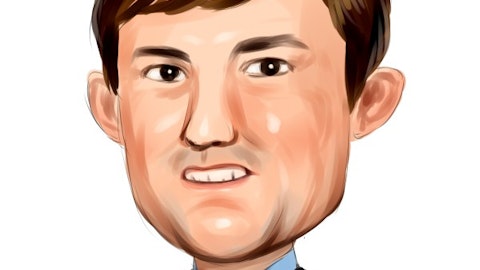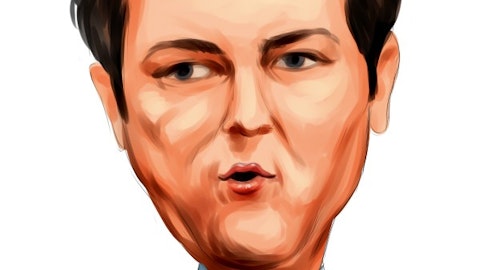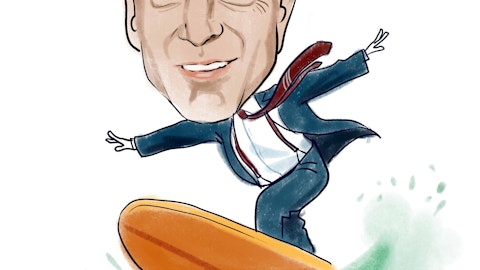Roberto Mignone’s Bridger Management keeps their returns extremely secret. They do extensive analysis and follow a long/short strategy. Wall Street analysts usually don’t do in-depth analysis of companies. They just talk to the management and their reports are strongly influenced by managements’ statements. Roberto Mignone knows information drives stock prices. One way of having an information advantage is using inside information. This is of course illegal. Another way of having an information advantage is doing the legwork and digging deep by visiting companies, attending trade shows, and talking to journalists and competitors. Recent insider trading arrests show that aggressive forms like these might also be considered illegal.

Katherine Burton profiled Roberto Mignone in her book “Hedge Hunters”. She explains Mignone’s strategy as follow:
“Mignone’s core positions include roughly thirty long positions, which are each limited to 5 percent of the portfolio initially and never get larger than 10 percent. He has about sixty core short positions, each no bigger than 2 percent at the start. He never allows them to grow bigger than 4 percent. Overall, the gross exposure is 150 to 200 percent, meaning the value of the long and short positions adds up to 1.5 to 2 times the net assets in the fund. The net exposure is between 20 and 60 percent.”
Roberto Mignone graduated from Harvard Business School and joined John Griffin at Blue Ridge Capital. Right before his 29th birthday in July 2000, he launched Bridger Management which now manages about $2 Billion. He charges a 1.5 percent management fee and 20 percent incentive fee. He believes fund size is a drag on the performance of a long/short fund manager, so he has no desire to run a much bigger fund than what he is currently running.
Roberto Mignone noticed a trend among hedge fund holdings. There are favored shorts for hedge funds where several hedge funds pile on the same short position. He says hedge funds recently started to pile on to the same long positions as well. He thinks analysts sharing ideas causes herd like behavior of investing in 50-100 stocks, so Mignone prefers to act independently. His top 15 positions at the end of September were:
| Name of the Security | Value (x1000) | Change in Number of Shares |
| UNITEDHEALTH GROUP (UNH) | 106208 | -23% |
| WASTE CONNECTIONS INC (WCN) | 95488 | -2% |
| IESI-BFC LTD (BIN) | 75354 | -7% |
| CAREFUSION CORP (CFN) | 68310 | 272% |
| PFIZER INC (PFE) | 65160 | 0% |
| POPULAR INC (BPOP) | 64258 | 0% |
| MORGAN STANLEY (MS) | 61421 | 0% |
| GENPACT LTD (G) | 57849 | -34% |
| CENTENE CORP (CNC) | 56262 | 0% |
| HYATT HOTELS CORP (H) | 56085 | 0% |
| PALL CORP (PLL) | 54394 | 6% |
| CARDINAL HEALTH INC (CAH) | 52864 | 13% |
| HERTZ GLOBAL HOLDINGS (HTZ) | 46861 | -12% |
| EXPEDIA INC (EXPE) | 45168 | New |
| BOSTON SCIENTIFIC CORP (BSX) | 44749 | -10% |
Mignone’s top position United Health is also one of the top positions in David Tepper’s portfolio. Daniel Loeb added Carefusion to his portfolio during the third quarter. Lee Ainslee’s Maverick Capital has $366 Million worth of Pfizer and $330 Million of Expedia shares. David Einhorn has nearly $400 Million of Pfizer. Chase Coleman’s Tiger Management increased its position in Genpact (G) and added brand new Green Dot (GDOT) and Amazon (AMZN) positions. There might be some information flow between these two Tiger cubs.
It is clear that Roberto Mignone likes the waste management business though he is slightly reducing his positions in WCN and BIN. His biggest new position is Expedia (EXPE). Other new positions are Allscripts Healthcare Solutions, Inc. (MDRX), National CineMedia, Inc. (NCMI) (almost new), Activision Blizzard, Inc. (ATVI), Amazon.com (AMZN), Dollar Thrifty Automotive Group Inc. (DTG), SolarWinds, Inc. (SWI), Stratasys Inc. (SSYS), Green Dot Corporation (GDOT), Acorda Therapeutics, Inc. (ACOR).



